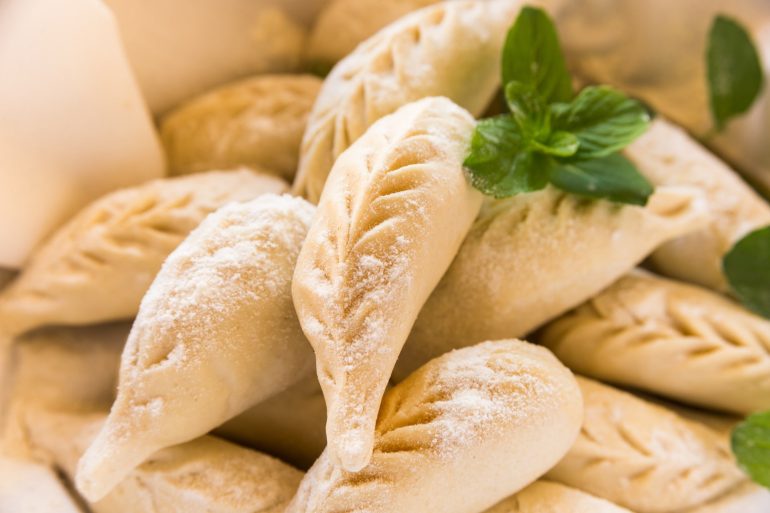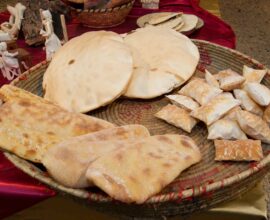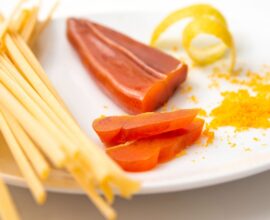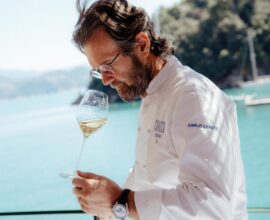Sardinian cuisine: the island’s gastronomic tradition in 10 dishes
Sardinian cuisine: a triumph of flavors and aromas between land and sea
The dishes of Sardinian cuisine are prepared with simple and genuine ingredients, that recall the pastoral, peasant and seafaring tradition.
The recipes of Sardinian cuisine tell of different gastronomic souls of the island. These are the result of contamination and exchanges between different European and Mediterranean cultures. From bread, which has a profound symbolic value, to seafood and land dishes, from fresh and aged cheeses to the many pasta, the wide variety of honeys and irresistible desserts.
Sardinian culinary art is part of the Mediterranean diet. This is the nutritional model that UNESCO included among the oral and intangible heritages of humanity in 2010. It is an explosion of flavors and aromas enhanced by the island’s wines, such as Cannonau and Vermentino, appreciated all over the world, and by myrtle, the famous liqueur symbol of hospitality and welcome.
At Forte Village, an award-winning resort surrounded by the marvelous Sardinian sea, the specialties of Sardinian cuisine are part of the menus created by the best Italian chefs. They offer guests a real gastronomic journey to discover the flavors of tradition and the most interesting trends in national and international cuisine.
At Forte Village guests can choose from a range of gourmet and starred restaurants to live a true sensory experience. At the splendid Bellavista restaurant, directly overlooking the sea, they can taste local products at zero km combined with local wines. Instead, Giuseppe Bissacot‘s Pineta offers themed evenings with traditional dishes. Finally, at the elegant Cavalieri restaurant they can enjoy exclusive and refined dinners.
Sardinian cuisine: 10 specialties to try at least once
The flavors and aromas of Sardinian cuisine arise from the encounter between memory, history and culture. Let’s see ten dishes that show the rich and varied gastronomic tradition of the island:
- Culurgiones: the most famous version of this pasta resembles ravioli. It has a characteristic ear-shaped closure and is typical of the Ogliastra sub-region of Barbagia. They are filled with potatoes, pecorino and mint, but the recipe varies from area to area. In Gairo, Bari Sardo and Ulassai, for example, the filling includes potatoes, garlic and mint. In southern Sardinia the ingredients are fresh sheep or goat ricotta, eggs and saffron, with Sardinian pecorino, nutmeg, chard or spinach. Once cooked in boiling water, the culugiones are seasoned with olive oil or fresh tomato sauce and a sprinkling of grated pecorino. Since 2015 the “Culurgionis d’Ogliastra” are an PGI product;
- Malloreddus: known in the rest of Italy as “Sardinian gnocchetti”, malloreddus are a type of pasta with an elongated shape, similar to thin striped shells. They are about 2 cm long, made of semolina flour, water, salt and flavored with saffron. They are typical of the Medio Campidano area, in Southern Sardinia. Generally they are seasoned with sausage ragù and grated Sardinian pecorino, but there are many versions such as those with casu furriau (melted cheese);
- Frègula: is one of the symbolic products of Sardinian cuisine. Its shape, texture and preparation are reminiscent of Middle Eastern couscous. To produce the small irregular grains (2-6 mm), it is mixed by hand, inside a large earthenware container, durum wheat semolina and water. Afterwards, the small balls are left to dry in the sun on a horsehair sieve and covered with a cloth. Finally, they are toasted in the oven for about fifteen minutes. The origins of the frègula are ancient: the first document that mentions them is the Statute of the Millers of Tempio Pausania, from the fourteenth century. This document illustrates the preparation that took place only from Monday to Friday, as during the weekends the water derved for agricultural work. The frègula is boiled in boiling salted water. Clams are among the most popular condiments for frègula, and this pairing is typical of Cagliari;
- Porceddu: suckling pig on a spit, flavored with saffron, black pepper or nutmeg, myrtle, thyme and mint. It is among the most famous dishes of Sardinia and one of the most representative of the island. According to some sources, porceddu was originally consumed by shepherds exclusively during the Easter period, as pork was considered an important food resource for families. The creation of this dish seems to date back to the period of the Spanish settlements. The preparation takes between 3 and 5 hours and the most frequent cooking techniques are two: on a vertical spit, with embers of olive and juniper, or underground cooking with porceddu in a natural oven dug into the earth, on embers of myrtle;
- Panadas: These savory pies are of Spanish origin. In fact, they resemble Peruvian or Argentine empanadas. They consist of a wrapping of violata or violada pasta prepared with semolina and lard or semolina and olive oil. They usually contain lamb, pork or chicken meat, and other condiments, such as peas, artichokes, broad beans, courgettes, peppers, aubergines, mushrooms or potatoes. But the filling varies from area to area. The most famous version of panadas is the one with eels, widespread above all in the Campidano area, in particular in the municipality of Assemini. In fact, fishing was the main activity here in the past due to its proximity to the Santa Gilla Lagoon. Traditional cooking takes place in the oven but in Oschiri, in the province of Sassari, they are also fried;
- Suppa cuata: it is a typical dish of Gallura, a historic region of northern Sardinia. It’s a little reminiscent of lasagna. In fact, suppa cuata (or Gallura soup) is prepared by arranging several layers of stale bread moistened with sheep’s meat broth, sometimes flavored with beef, and seasoned with grated cow’s cheese, in flakes or slices. Sometimes aged pecorino, mint, parsley, cinnamon, nutmeg or other aromatic herbs are also used. Furthermore, instead of stale bread it is possible to use pane ‘e poddine del Logudoro, or pane carasau. The Gallura soup is cooked in the oven and served hot;
- Burrida a sa casteddaia: the ingredients of this dish are gattuccio marino (a typical Mediterranean fish), vinegar, extra virgin olive oil, walnuts, garlic and parsley from the Cagliari and Pula area. The name of the traditional seafaring recipe derives from the Provençal bourride, which means “fish soup”, while “casteddaia” refers to Casteddu (Castello), or the Sardinian name of Cagliari. It is often an appetizer, best accompanied by a warm slice of civraxiu bread and a good glass of Vermentino di Gallura. Probably of medieval origin, it seems that the Genoese brought this dish to Sardinia.;
- Seada: known all over the world for its characteristic sweet-salty flavor, seada (or sebada, savada and sevata in the Sardinian language), is a sweet made from semolina, lard, fresh sour cheese (casu furriau), lemon zest and honey (or sugar). It is particularly widespread in the areas of Sardinia traditionally linked to sheep farming. Seada owes its name to the Hordeum vulgare from which barley (cebada in the Sardinian language) is obtained, already popular in Sardinia in the Paleolithic, as spelled and oats, and cultivated on the island first by the Nuragic civilization and then by the ancient Romans. It looks like a little ravioli with a wavy edge. It is fried in abundant seed oil for a couple of minutes and then covered with warm strawberry tree or chestnut honey. People taste it together with sweet and aromatic wines, such as Vermentino di Sardegna, Vernaccia di Oristano, Malvasia di Bosa and Moscato di Sardegna;
- Papassinu: they are typical biscuits of southern Sardinia. People prepare it especially on the feast of All Saints. But today it is possible to find them in pastry shops and supermarkets at any time of the year. The name derives from the word papassa which in the Sardinian language means “sultanas”, which is one of the ingredients together with shortcrust pastry, almonds, walnuts, grated lemon or orange zest, spices and honey. The papassini are baked in the oven at a temperature of 200 ° C. Again, the preparation varies according to the region;
- Pàrdulas: it is a typical Easter cake, popular especially in Sulcis and Campidan. The pàrdulas (or, in Italian, formaggella) are miniature cakes with ricotta or cheese filling (in the second case their name is casadinas). There are several versions, including savory ones, with saffron, orange or lemon flavored or with sultanas. The pàrdulas are baked in the oven and once ready they are covered with powdered sugar.
Do you want to enjoy the authentic Sardinian cuisine and live a dream vacation in a true paradise? Discover the Forte Village Resort in Sardinia






